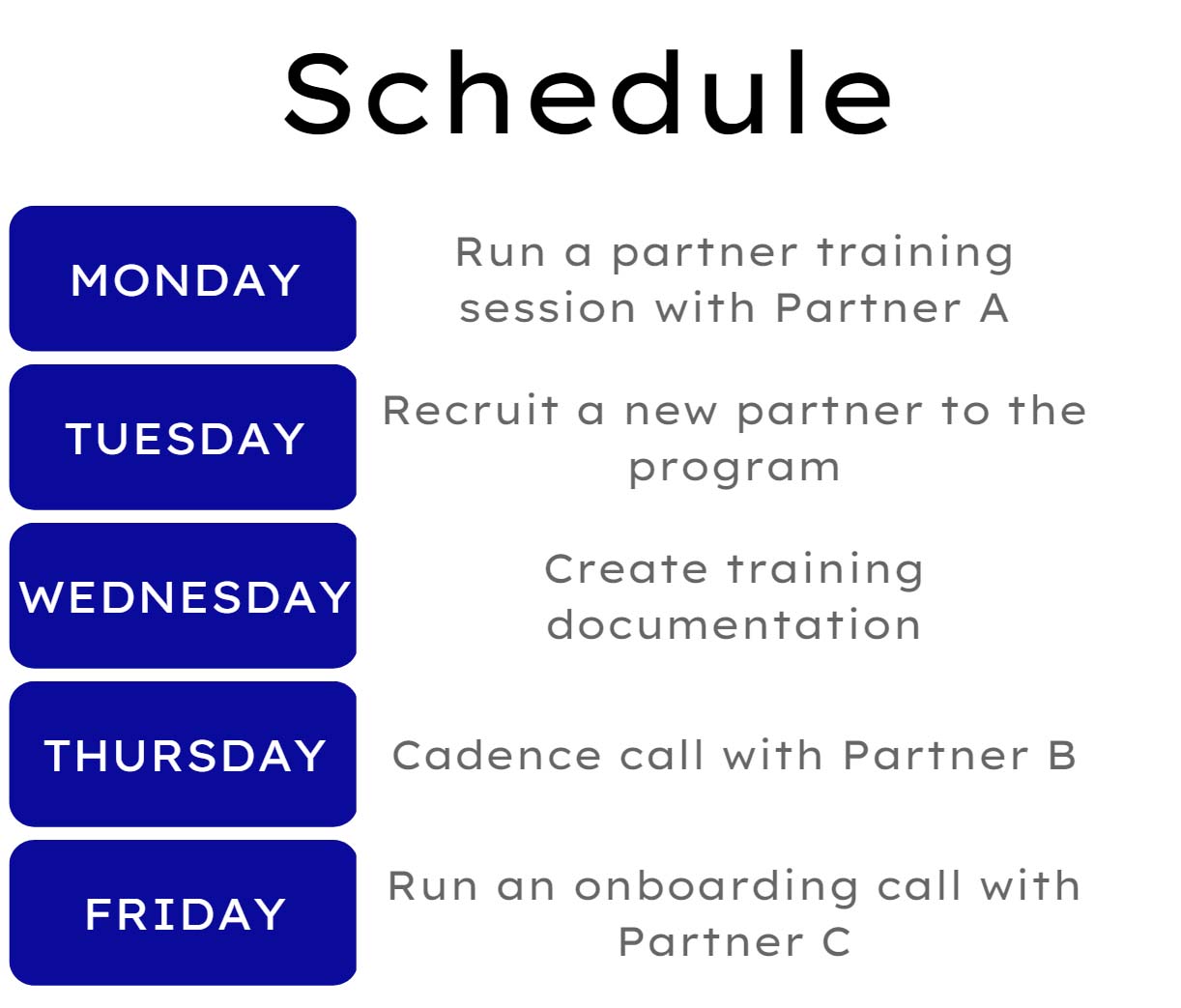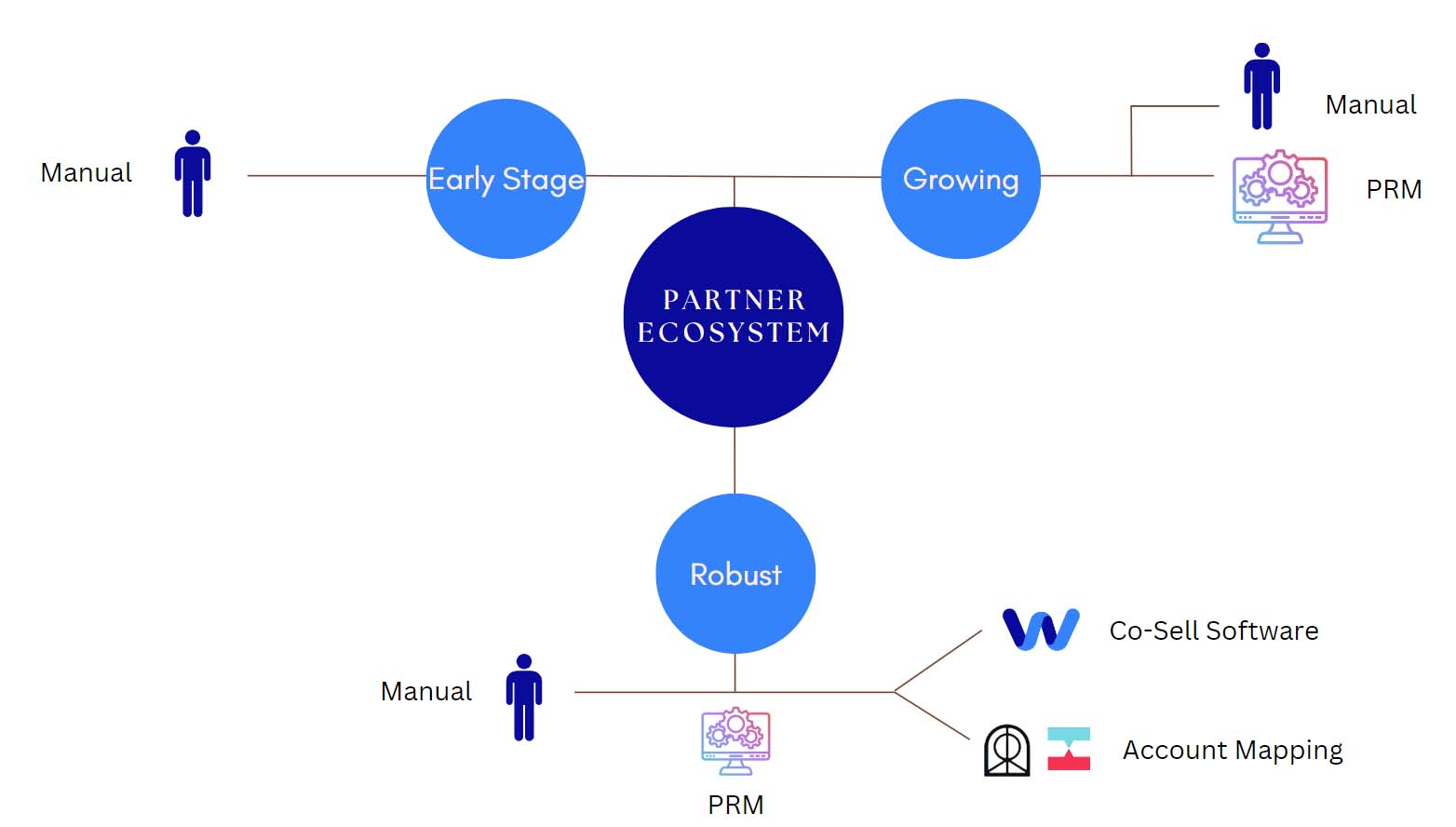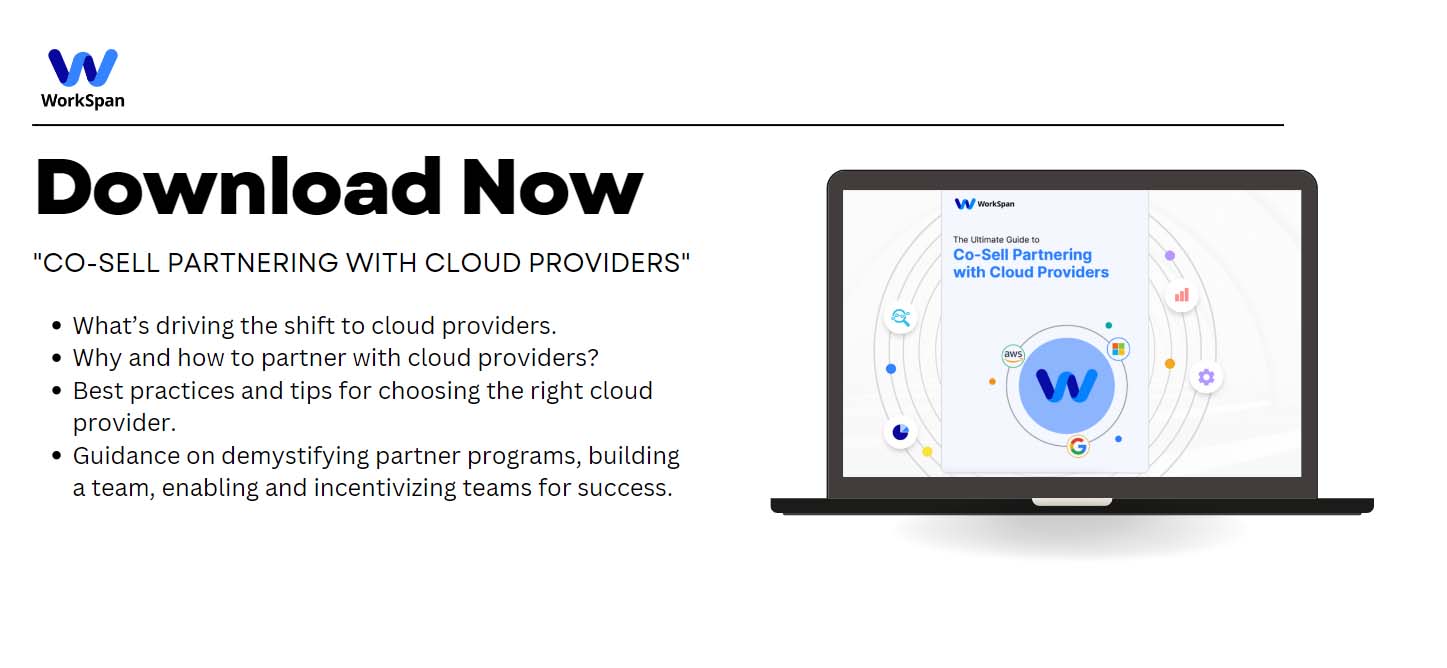
The rise in the global popularity of partnerships and their indirect sales approach is undeniable.
A growing number of companies are beginning to recognize the considerable advantages that partnerships can offer. These benefits include accelerated sales processes, enhanced customer loyalty, and increased visibility through collaborative marketing efforts.
In the words of Jay McBain, Chief Analyst at Canalys, we are firmly in the era of the "ecosystem."
For those unfamiliar with the concept, an ecosystem can be defined as a network of interdependent partners that collaborate for shared benefits.
Upon the successful establishment of a partner ecosystem, it's highly likely that your network will consist of a large and diverse mix of partners. Catering to these varied partners' needs can add complexity to your overall management tasks.
In light of this intricacy, the need for implementing technology to streamline and enhance the overall management process becomes apparent.
In this blog post, we will explore how your partner ecosystem is expected to grow and transform as your business scales.
Additionally, we will discuss how a partner management system consisting of choice software integrations and thorough processes can significantly aid in effectively evolving ecosystem.
Let’s dive in…
Understanding What Is Meant By Partner Ecosystem
Before we delve into the challenges businesses face when managing an expanding partner ecosystem, it's essential to clarify what exactly the term "partner ecosystem" entails.
As briefly mentioned earlier, a partner ecosystem consists of a network of partners who are interlinked and collaborate collectively.
For a prime example of a successful partner ecosystem, consider the cybersecurity firm Palo Alto Networks.
Palo Alto has approximately 6500 partners encompassed within their ecosystem, including managed service providers, global system integrators, and technology partners.

Each partner in the Palo Alto partner ecosystem contributes a vital service that enhances customer value while also offering financial benefits to the other participants.
This is an ecosystem, and as an offshoot, each partner requires a unique partner management approach and process to ensure their success.
How Partner Ecosystem Management Needs Change
Following on from the paragraph above, it's worth noting that Palo Alto did not build an ecosystem overnight.
In fact, ecosystems often start off as a handful of partners, and then grow. As your ecosystem broadens and deepens, you will need to assess existing processes, establish new management systems, and potentially upgrade your supporting technology.
Managing The Early Stage Of Your Partner Ecosystem
In the initial stages of developing a partner ecosystem, it's common to manage a small number of partners.
It is also typical to only have one partner type at this stage, as this is very much a “testing” phase to work out what works. For example, you may have technology partners that you are integrating with or referral partners who are sending leads over.
This phase usually relies on manual operations and human input to foster growth and continuity.
For instance, in the early stages of your partner ecosystem, rudimentary tools such as email and instant messaging can typically support the recruitment, onboarding, enabling, and management of your partners.
Given the limited number of participants formal partner management software isn't necessary, as the scope of your program doesn't require operations at scale.
To illustrate, consider a scenario where you're a partner manager at an early stage dealing with 10-15 partners.
In an average week, you might spend a few hours per partner performing tasks like those below:

As long as there are sufficient hours in the day to ensure partner satisfaction and progression, a program could skate by managing their ecosystem without designated software.. Manual efforts suffice to maintain momentum.
Managing a Growing Partner Ecosystem
Upon transitioning to the second stage of your partner ecosystem, identified in this article as the "growing" stage, you've achieved a critical volume of partners in your ecosystem. This could potentially encompass varied types of program participants, including Technology, Agency, or Channel partners. Each of these partners necessitates different elements to ensure their satisfaction.
At this phase, you've surpassed the era of manual efforts, and a partner management system starts to make practical sense.
The shift that arises at this stage stems not only from the time required for partner management but also from the complexity of the different needs that partners have when they join your ecosystem.
For instance, a technology partner might require more enablement information related to the functionality of the joint solution.
An agency may need more upfront training to aptly represent your solution to potential clients.
Channel partners might demand additional sales materials when it comes to positioning against competitors.
Considering all these wants and needs collectively, the situation can pose a challenge for partner managers if forced to rely on outdated management processes.
This is how a partner management system can step in to streamline and automate much of the partner management process.
Where A Partner Management System Can Help
A partner management system can significantly aid a partner manager by introducing automation, ensuring each partner - regardless of their type or size - receives the resources they need to thrive.
At this stage the management system which is needed is a PRM, short for partner relationship management.
Employing PRM software allows for automating partner management aspects such as maintaining a central repository for marketing and sales collateral.
This facilitates partners in self-serving, obtaining the necessary information they need without going through the partner manager, saving valuable time.
Moreover, incorporating a partner management system streamlines processes such as training. Most of these systems include a Learning Management System (LMS) or a partner training feature, enabling partners to log in and self-serve the training content pertinent to them.
Not only does this save the partner manager considerable time otherwise spent on in-person training sessions, but it also enables the creation of varied partner training "tracks." This offers a tailored training experience to each partner type.
Read Our Ultimate Guide to Building a Framework for Your Partner Ecosystem
Managing A Robust Partner Ecosystem
At this stage you have reached a robust partner ecosystem, such as the above-mentioned example referencing Palo Alto Networks.
At this stage your team has most likely scaled, and you likely have a whole range of different partners including resellers, system integrators and hyperscalers like AWS, Google and Microsoft.
You are likely to need several pieces of software to help with the overall management and optimization of your ecosystem.
That is because again each partner has their own wants, needs and nuances.
Pulling out the hyperscaler use case, the main partner management process here is co-selling with them in order to drive joint value.
However, when partnering with hyperscalers there is a whole range of things that go into this including joint solution creation and co-marketing to do it effectively.
Doing this manually can take a lot of time, and lead to ineffective relationships with hyperscalers.
How A Partner Management System Can Help
Applying the same principle from the previous section, a partner management system can significantly aid a well-developed partner ecosystem in several ways.
Moreover, programs of this magnitude calls for a multifaceted approach when considering software to increase the overall likelihood of success.
For instance, employing a partner ecosystem platform (PEP) like WorkSpan would be ideal for managing hyperscalers. WorkSpan offers a Co-Sell App that allows companies to automate many processes that would otherwise be manual, like joint opportunity entry. It also provides a centralized platform to set up, manage, and run joint co-marketing campaigns.
Learn about using WorkSpan to manage ecosystem business processes
For those marketing with technology partners, a partner management system like Crossbeam would be beneficial.
Crossbeam assists in managing account mapping and provides an overview of any overlaps that might be happening between you and your partners.
When your partner ecosystem has achieved significant scale, there's a high probability that you have considerable revenue flowing through your channel.
This revenue justifies the investment in acquiring several different partner management tools to maximize the benefits from your entire ecosystem.

How Your Partner Management Process Changes As Your Program Grows
Partner ecosystems have gained significant traction as a potent go-to-market strategy for businesses.
When effectively established, they can serve as powerful catalysts for your business's growth.
However, as your ecosystem expands and the number and types of partners increase, a finely-tuned approach becomes necessary to extract maximum value from your ecosystem.
In this blog post, we have outlined various stages of a partner ecosystem and how your partner management evolves at each stage.
We've delved into how the growth of your ecosystem necessitates more comprehensive partner management processes, and your software stack expands accordingly to accommodate this growth.
For mature ecosystems, the need arises to procure multiple partner management platforms to drive maximum impact.
One such tool is WorkSpan, which facilitates effective co-selling with various types of partners.
Given that co-selling forms an integral part of partnering and typically demands substantial manual effort, WorkSpan offers an automated solution to make this far easier.
This allows for increased efficiency, freeing up resources for other vital tasks, and consequently amplifying the overall success of your partner ecosystem.
WorkSpan exemplifies how the right software can make partner management more manageable and more fruitful, underscoring the significance of an evolved partner management system in a maturing ecosystem.

Heading
Heading 1
Heading 2
Heading 3
Heading 4
Heading 5
Heading 6
Lorem ipsum dolor sit amet, consectetur adipiscing elit, sed do eiusmod tempor incididunt ut labore et dolore magna aliqua. Ut enim ad minim veniam, quis nostrud exercitation ullamco laboris nisi ut aliquip ex ea commodo consequat. Duis aute irure dolor in reprehenderit in voluptate velit esse cillum dolore eu fugiat nulla pariatur.
Block quote
Ordered list
- Item 1
- Item 2
- Item 3
Unordered list
- Item A
- Item B
- Item C
Bold text
Emphasis
Superscript
Subscript





.png)